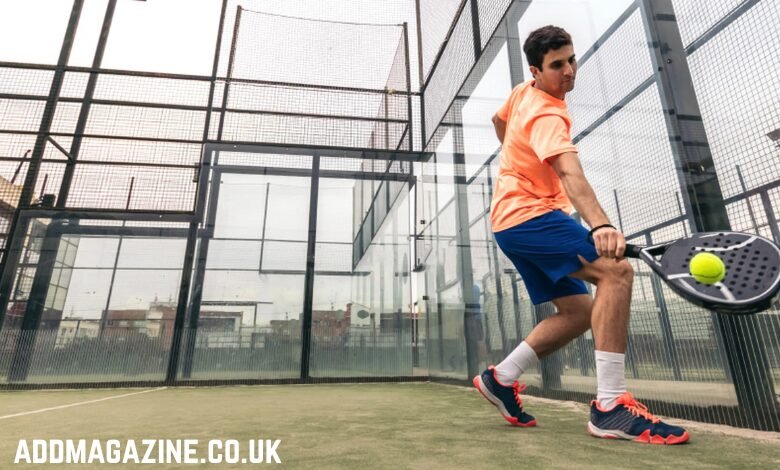The town of Kilkee, a small seaside haven on Ireland’s Wild Atlantic Way, has recently found itself at the center of a heated debate over a series of bench replacements. Known for its picturesque landscape and rich heritage, the town’s residents were taken aback when their beloved blue and white benches, a symbol of local pride, were replaced with brown plastic alternatives. What was initially a structural issue has now become a topic of public outcry, with many locals feeling excluded from the decision-making process.
The Original Blue and White Benches: A Town’s Symbol
For many years, Kilkee’s blue and white wooden benches were more than just a place to sit. They were a distinctive feature of the town’s seafront and a reflection of its cultural identity. Painted in the colors of the local Gaelic games, these benches were reminiscent of the uniforms worn by the town’s hurling and football teams. To residents, the benches represented both local pride and the town’s deep ties to its sporting history.
Kilkee’s proximity to the Wild Atlantic Way, one of Ireland’s most iconic coastal routes, made these benches particularly significant. Visitors and locals alike would sit on these benches, enjoying the stunning views of the Atlantic Ocean. The benches were placed at various scenic spots, including the popular esplanade, the historic bandstand, and near the car park for the George’s Head walking trail. Over time, they became iconic, instantly recognizable as part of the town’s charm.
The Replacement: Plastic over Tradition
However, recent events have left many residents upset and confused. A number of the original benches were removed after structural issues were identified. The benches, which had served the town for many years, had suffered damage and wear, prompting a decision to replace them. In their place, the local council installed new brown plastic benches made from recycled materials.
While the change was made with the intention of ensuring safety and durability, the aesthetic impact has been far from well-received by the public. The new benches, made of recycled plastic, have been described as “awful” by some residents, who feel they are a stark contrast to the vibrant, community-centered blue and white seats that once adorned the town. The brown plastic benches, although environmentally friendly, are seen by many as a poor substitute for the original design that had become a local landmark.
The Public Reaction: A Divided Community
The response to the replacement of the iconic benches has been mixed. On one hand, some residents have praised the decision, pointing to the durability and maintenance-free nature of the new plastic benches. These benches are made from recycled materials, which aligns with environmental goals of reducing waste. The plastic construction ensures they won’t deteriorate as quickly as the old wooden benches, which had suffered damage over time.
Local councillors, including non-party member Ian Lynch, have expressed support for the new benches. Lynch, in a post on social media, shared his satisfaction with the quick installation and the solution to the damaged seating. He highlighted that the benches had been removed due to structural issues and expressed delight that new picnic tables and benches were now available for residents and visitors. In his view, the replacement was necessary and was carried out efficiently.
Despite the official support, many locals feel their voices were not heard in the decision-making process. A common sentiment shared on social media and in local conversations is the belief that the community should have been consulted before any changes were made. One resident questioned whether a public consultation had taken place, asking if the decision to replace the benches had been made without input from the town’s people. Another resident lamented that the blue and white benches, which had become a local trademark, were being replaced without the community’s approval.
The Case for Consultation
The absence of a formal consultation process is one of the key issues that has angered Kilkee residents. For many, the benches were more than just functional seating; they were an important part of the town’s identity and heritage. The removal of the benches, and their replacement with plastic alternatives, is seen as an erosion of Kilkee’s historical character.
Local traditions and landmarks often hold sentimental value for communities, and the benches were no exception. The blue and white color scheme was a direct reflection of the town’s sporting pride, and their design was integral to the town’s seaside atmosphere. The benches had become a symbol of Kilkee’s unique charm, and many believe that replacing them with generic plastic alternatives was a missed opportunity to preserve the town’s identity.
Furthermore, some locals have proposed alternative solutions that would have preserved the aesthetic value of the original benches. Suggestions include replacing only the wooden planks with recycled plastic while retaining the original color scheme. This would allow for the longevity of the benches while maintaining the visual connection to Kilkee’s Gaelic heritage. Such compromises might have helped avoid the backlash and ensured that the new benches fit into the town’s overall character.
Historical Context: The Role of Public Art and Design in Small Communities
The controversy surrounding Kilkee’s bench replacements also highlights a broader issue that many small towns face: the tension between modernity and tradition. As communities grow and evolve, local governments are often tasked with making decisions that balance practicality with cultural preservation. While plastic benches may be a more practical solution in terms of durability and cost, their appearance can feel out of place in a town that prides itself on its historical and cultural heritage.
Public art and design, including street furniture like benches, play an important role in shaping the character of a town. In many communities, benches, statues, and other public installations are not just functional objects but also symbols of local pride and identity. When these features are altered or removed without proper consultation, it can create a sense of loss and alienation among residents.
In Kilkee, the benches served a dual purpose: they were places to sit, but they were also integral to the town’s visual landscape. Replacing them with standard, non-descript plastic furniture may make sense from a purely practical standpoint, but it overlooks the emotional connection that residents have with the original design. For many, the blue and white benches were a part of what made Kilkee special, and their removal marks the loss of a small but significant piece of the town’s character.
The Way Forward: Finding a Balance Between Practicality and Tradition
As the debate over the bench replacements continues, it’s clear that Kilkee’s residents feel strongly about their town’s heritage. While there may be practical reasons for replacing the old benches, the lack of consultation has left many feeling excluded from the decision-making process. Moving forward, it’s important that local councils engage with communities when making decisions about public spaces. Public consultations or community feedback sessions could have provided an opportunity for residents to voice their concerns and propose alternative solutions that would have balanced tradition with practicality.
The case of Kilkee’s benches serves as a reminder that even small changes to public spaces can have a big impact on a community’s sense of identity. As towns like Kilkee navigate the challenges of modernization, it’s important to find ways to preserve what makes them unique while ensuring that the town remains functional and sustainable for future generations.
Ultimately, the benches may be replaced, but the conversation about preserving the town’s heritage and identity will likely continue. Whether or not the brown plastic benches remain, one thing is clear: Kilkee’s residents care deeply about the future of their town, and their voices deserve to be heard.



